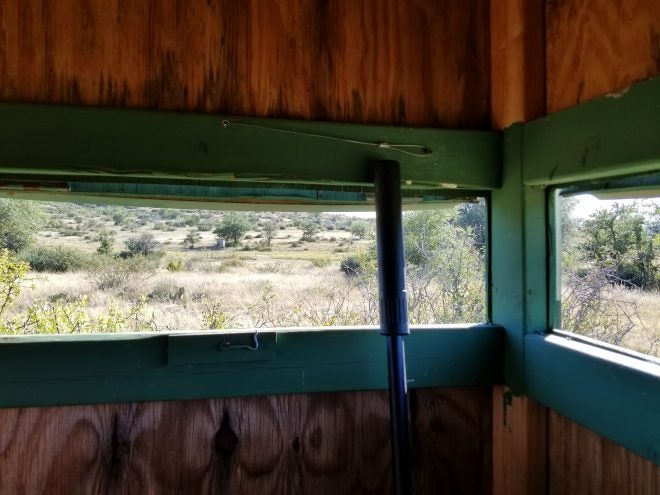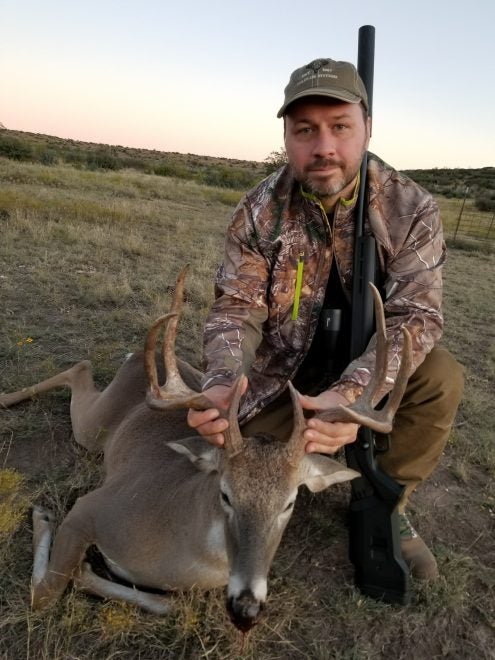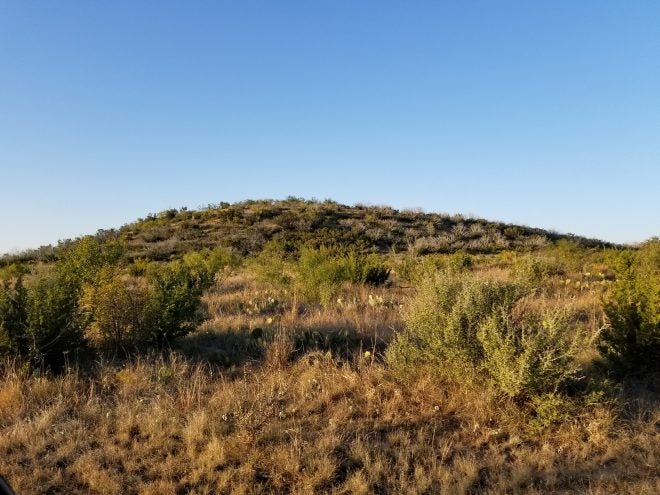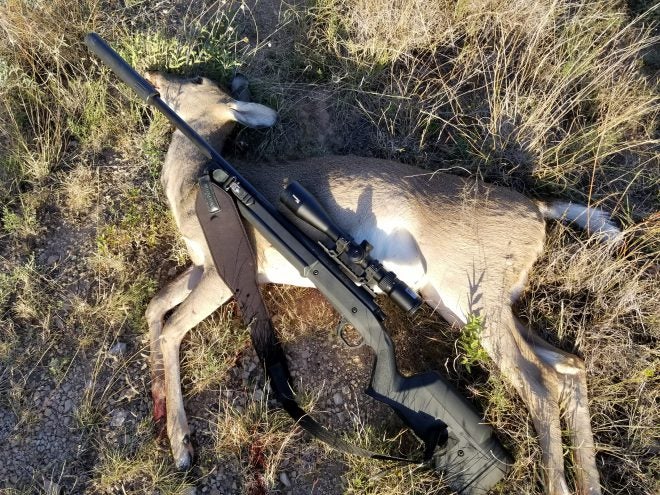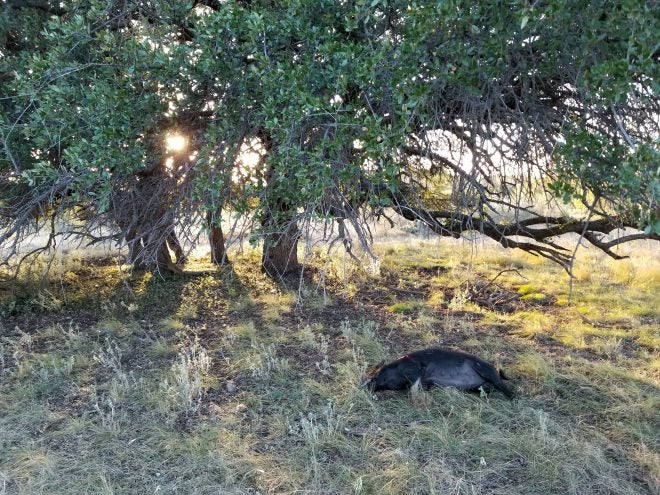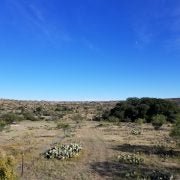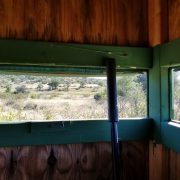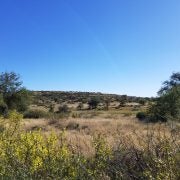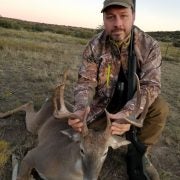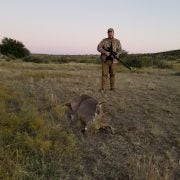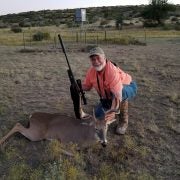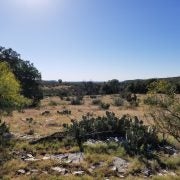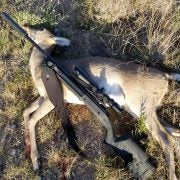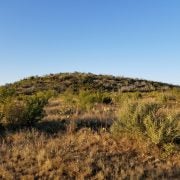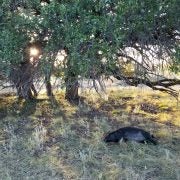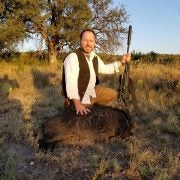Hunt After-Action Report: I’m Now on the 6.5 Creedmoor Bandwagon
Jon Stokes 01.04.18

When I got an invite to a Remington-hosted hunt for writers at the S Ranch in Central Texas, I knew I had to go. I haven’t been deer hunting in quite some time, so I jumped at the chance not just to get back out in the field but to try out new hardware and put some existing hardware through its paces.
I wouldn’t call myself a 6.5 Creedmoor skeptic by any means. I’ve edited enough articles on the round from AllOutdoor writers who have experience with it to know that it’s the real deal. But I wasn’t in any particular hurry to get on that bandwagon. I have an existing investment in .308 Win, and my attitude toward that investment is, “if it ain’t broke, don’t fix it.”
I was about to get an education.
I had shot 6.5 before, but only at steel. This would my first time shooting the round at wild game, and also my first time shooting it suppressed. The rest of the writers on the trip were all 6.5 Creedmoor believers, and one told me he had taken at least ten different types of North American and African medium-sized to large game with it.
Range testing and first impressions
The Bushnell Tropy Xtreme scope on the Remington 700 Magpul I’d be using for the hunt was sighted in already, but I needed to send some rounds downrange to get a feel for the gun before pointing it at a buck, so we headed to the range to shoot paper.
All of the rifles I shoot regularly have Geissle two-stage triggers, so I’m used to a two-stage pull for precision shooting. The stock Model 700 Magpul, though, has a single-stage trigger, so I was a little bit off with it because it messed with my normal flow.
Just horsing around with a bag under the fore-end and no squeeze bag, I was able to get a two-inch group at 100 yards right out of the gate. If I had actually been paying attention instead of talking and just function checking the rifle, I could’ve more than cut the group size in half, but by the time I had six or so rounds downrange it was clear that it was minute-of-deer accurate, so I was good to go.
Thanks to the AAC 300-TM suppressor on the end of the gun, the shots were quieter than the Benjamin Bulldog .357 airgun I’ve been testing. The rifle was totally comfortable to shoot repeatedly without any hearing protection, and the recoil was next to non-existent. It was almost like shooting suppressed .22LR.
After the very brief range session, I was beyond impressed with the combination of the round and the can, and I had total confidence that I could hit a deer or a hog in the 100 to 200 yard range.
But can a gun that shoots a narrow bullet this softly and quietly actually drop game? I knew from second-hand testimony that the answer is, “absolutely,” but I was ready to find out for myself.
I reloaded the mag from a box of Remington 6.5 Creedmoor HTP Copper rounds, which use the ever popular Barnes TSX bullets, and I was ready to hunt.
The buck
Over the first three days of the hunt, I passed on a number of solid bucks, not knock-your-socks-off trophies, but great bucks nonetheless. By four, the next-to-last day I was getting antsy. I was ready to get something in the bag, and then spend the last day looking for a doe and some hogs. (And if I’m being honest, I also wanted to sleep in on the last day.)
It was nearing the close of the day when a nice, mature eight-point buck began making his way across the field over towards the feeder. The guide recognized him as one of the bucks we’d seen on the first day and flagged as a “last day shooter,” so I immediately made the call.
“Alright, let’s do this. He’s plenty nice enough for me, and I plan on sleeping in in the morning.”
Ed, my guide, chuckled as I brought the rifle up and made ready to shoot.
The buck had drifted behind a bush, and when he emerged I had a near-perfect broadside shot, where he was facing to my right and angled away slightly.
This was about a 90-yard shot, and the rifle was zeroed at 100 so I could hold center and not worry about drop at this distance.
I squeezed the trigger and dropped the buck right in his tracks with a direct shot to the shoulder.
(The guides at Wildlife Systems prefer shoulder shots over the traditional behind-the-shoulder vitals shots. On some of the vitals shots the bullet doesn’t go all the way through, and if there is no exit wound, then there’s no blood trail and it’s difficult to track the animal if it doesn’t drop immediately. A shoulder shot has a better chance of stopping the animal immediately, at the cost of shredding some meat; but the loss of a shoulder doesn’t matter if you’re doing a mount.)
It wasn’t until we field dressed the animal that the extent of the damage done by the 6.5 Creedmoor round was apparent. There was no exit wound, and the entrance wound was small and difficult to find, but when the bullet went in it expanded and created a devastating wound that wrecked the shoulder and turned the vitals to mush.
Ed estimated him at about 6 years old, and one of the guides later scored him a 117.5 on the Boone and Crockett scale.
The doe
The next day we rode around the ranch looking to scare up some pigs or does. We ran across a number of deer who, having detected our approach, where high-tailing it in the opposite direction by the time we saw them.
It was nearing the end the last day when we came across a doe standing in the waning sunlight high on a hill. She was standing broadside to us, staring out at us from down the hill and across the field.
Ed stopped the truck, and I jumped out and rested the rifle on the hood. We later ranged the shot at 190 yards using a range finder, and I was shooting up at the doe, so I held a few inches below the top of the shoulder and to the back, going for a vitals shot. (I know I said earlier that the guides were asking us for shoulder shots, but I didn’t want to wreck the shoulder.)
I squeezed the trigger and saw the doe jump and lurch to the right with a stagger. I knew she had been hit from the way she moved, so after taking a brief moment to regroup with the guide, I slung the rifle and set out toward the hill.
Brian McCombie followed me, and he and I began a sweep up the hill at about twenty yards apart. When we got near where the doe had been standing, I could see blood everywhere and could smell the wounded deer, so I knew she couldn’t have gone far.
We found her body about forty yards from where I landed the shot, and I dragged her back down the hill so that we could field dress her as the sun set.
Again, the entrance wound was small, but there was a solid exit wound that had bled profusely. The bullet had landed about four inches directly below where I held the crosshairs, with no apparent windage drift despite a stiff crosswind that was blowing as I made the shot.
As with the buck, field dressing revealed a devastating hit. Her lungs were shredded, and part of the bullet had clipped her heart. Yet again, I was impressed with this round.
The sow
After field dressing the doe and loading her into the truck, we headed back to the camp, taking our time and keeping an eye out for hogs.
About twenty minutes into the ride, Ed spotted motion under a large oak about 100 yards from the trail, and he stopped so we could glass it. It was a herd of hogs, and at least one of them was pretty large.
I got the rifle out and again rested it in the hood of the truck, and drew a bead on the largest hog. I squeezed the trigger and she dropped instantly, while the rest of the hogs scattered.
Brian headed out after the remaining hogs as I picked my way through the brush to the oak to check out my kill. On the ground in the shade of the tree lay a large sow, at least 150 pounds. The bullet had gone in right behind her right shoulder and exited behind her left shoulder, and blood was pouring out of the exit wound from her damaged vitals.
The rifle
In all, the suppressed Model 700 Magpul in 6.5 Creedmoor was a joy to shoot. It was dead-on accurate, quiet, and lethal. I actually have one of these guns now here at the house for review, so I’ll be talking about it in more detail, soon.
As of right now, I have only two complaints about the gun.
My first complaint is idiosyncratic to me and is easily remedied, i.e. the aforementioned single-stage trigger. It’s a great trigger, but I’m used to a two-stage. So if I were to buy this gun for myself, and actually I probably will, the first thing I’d do is drop at two-stage match trigger into it.
My second complaint is more serious, and it will be a dealbreaker for some: this gun is heavy. I spent a lot of time either in a 4×4 truck or a deer blind, so I didn’t haul the rifle around much. If I had, I imagine the weight would’ve gotten to me pretty quickly.
The gun by itself is 9 lbs, then when you add 1.5 lbs for the optic and another pound for the can, you end up with a 11.5lb hunting rifle. And that’s without ammo. In fact, if I were on a hunt where I was hiking and carrying a load with me, I may have to opt for something much lighter. I think this gun could definitely benefit from a fluted barrel option–anything to cut down on the weight.
Other than that, though, it’s a great rifle.
Miscellaneous gear notes
The Merrell Wilderness boots I reviewed back in mid-2014 are still going strong, and I wore those on this hunt. The only drawback to these boots is the weight, otherwise they’re awesome. I’ve worn them in hot weather and cold weather, and my feet are always just right in them. I added some black Superfeet insoles, and really like the whole package.
We used my customized Fallkniven F1 from JRE Industries to field dress the two deer and to completely slaughter the wild sow. The knife wasn’t sharpened once the whole trip, and it kept cutting and cutting. The guide was massively impressed with the blade’s performance, as was I. Once again, you just can’t go wrong with a VG10 Fallkniven blade.
Finally, though this wasn’t my particular bit of gear, the guide’s Toyota Tundra TRD Pro performed amazingly well. My wife drives a Toyota Sequoia Platinum, and we love that thing, so I definitely have experience with the Tundra/Sequoia family. But I’ve not really off-roaded in one before this trip. We spent all of our time either on two-tracks or completely offroad in the central Texas hill country, and the driver rarely ever even put the truck in 4WD mode. That thing was an off-road beast, for sure. I think he said it’s his third one, so he’s a happy customer.
I personally drive a 2017 Nissan Titan XD Platinum Reserve, and I love it. But it’s a lot bigger than the Tundra, with a longer wheel base, so it’s not nearly as nimble. If I was doing more off-roading and less hauling, I’d definitely consider the Tundra TRD.
